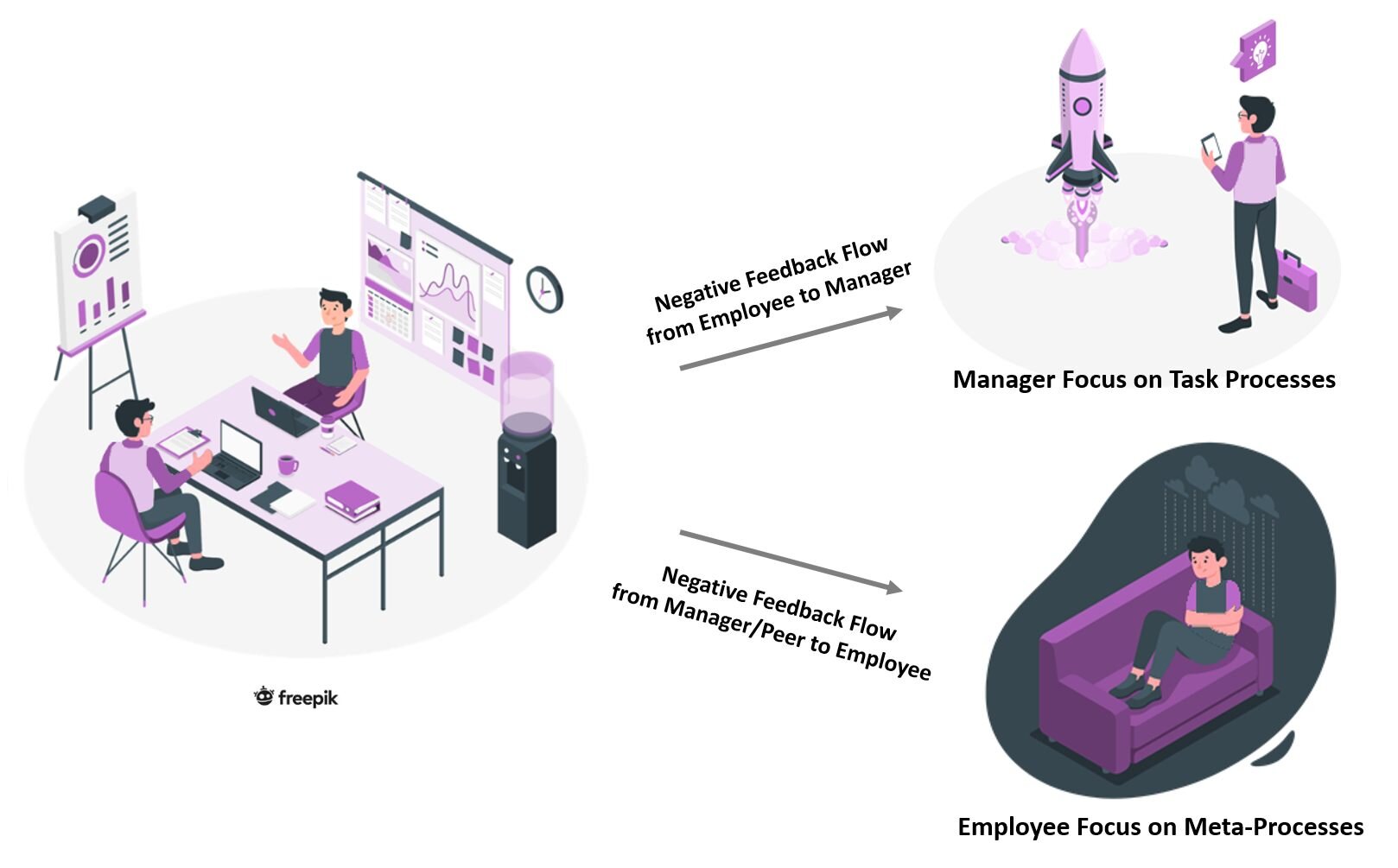Digest 20. Zooming in on the direction of feedback flow: What happens to creativity
Negative feedback is never easy to communicate and is meant to highlight the discrepancy between a current level of performance and the desired level and, in doing so, stimulating the receiver to close such discrepancy by improving one’s performance. However, negative feedback may backfire and produce the opposite effects: decrease motivation and performance, and harm wellbeing (see Digest 2).
One could wonder if this happens systematically and regardless of who delivers the negative feedback. In other words, does it make a difference whether the negative feedback comes from different sources or directions? We have seen that coworker feedback can induce innovative behavior in employees (see Digest 19), so does negative feedback provided by coworkers have a better effect than supervisor’s feedback, say on on creativity? And what about bottom-up feedback?
Can different feedback flows have different effects on creativity?
To answer this question, Kim and Kim (2020) conducted two studies: a laboratory experiment with 356 undergraduate students in an American university and, more interestingly, a quasi-field experiment in a health food Korean company with 225 employees. Their product development and management department was specifically chosen as their employees were responsible for researching, developing, and designing new products and developing marketing plans for these new products.
This company already had quarterly performance feedback where employees received feedback from their peers in March and September, and from their managers in June and December; and managers received feedback from their employees in March and September, and from their division heads in June and December. Having this practice in place and partnering up with researchers, the company allowed the authors to get on board and investigate whether creativity increased or decreased following feedback received from one’s manager (top-down), colleagues (lateral) or direct reports (bottom up). The issue is not trivial at all. On one hand, negative feedback manifests dissatisfaction with the status quo so it could prompt deviations from current ways of doing things, and trigger creativity. On the other hand, negative feedback could demotivate employees and as a result harm creativity.
The authors found that both expectations may be true because there are two opposite mechanisms through which negative feedback influences a recipient’s creativity.
Through the first mechanism, negative feedback enhances creativity. This is when feedback is provided by employees to their managers –bottom-up feedback flow. This is basically because managers do not take such criticism personally and solely focus on the task process to address the problem towards which the negative feedback was directed. It, hence, generates creativity.
Through the second mechanism, negative feedback hinders creativity. This is when feedback is provided by managers or by peers to employees –top-down or lateral feedback flow. In this context, an individual shifts the focus away from the creative tasks toward so-called “meta-processes”. Meta-processes are psychological states in which recipient feels threatened by negative feedback, becoming concerned about her/his ability, her/his social relationship with feedback providers, and her/his self-concept. This shift towards meta-processes prevents the creative worker from engaging in creative tasks and reduces the creative output.
Organizational implications
When it comes to negative feedback, the following recommendations may be beneficial to organizations who are especially concerned with creative behaviors and outputs:
Establishing formal processes (still not common enough) that enable employees to provide thoughtful, critical feedback to their managers since bottom-up negative feedback enhances creativity.
Limiting the provision of negative feedback from managers and peers during creative tasks to prevent detrimental effects. Such feedback can be provided after the creative tasks have been completed, or in dedicated sessions following the idea generation phase, when employees have time to cope with it. This, after all, is consistent with traditional brainstorming techniques.
Offering several follow-up sessions to employees when feedback is provided by managers or peers to give employees time to cope with it and reach a deeper understanding.
Helping managers in crafting their negative feedback in a way that does not trigger competition. This can be done by providing temporal comparison feedback instead of social comparison feedback (see Digest 14).
Supporting managers and colleagues in crafting their negative feedback in a way that matches individuals’ personality (see Digest 7) and prevent, in this way, feelings of threat in the recipients.
Training managers in coaching skill (see Digest 6), which may reduce people fear of losing face in front of their manager when receiving negative feedback.
——
Reference: Kim, Y. J., & Kim, J. (2020). Does negative feedback benefit (or harm) recipient creativity? The role of the direction of feedback flow. Academy of Management Journal, 63(2), 584–612. https://doi.org/10.5465/amj.2016.1196

